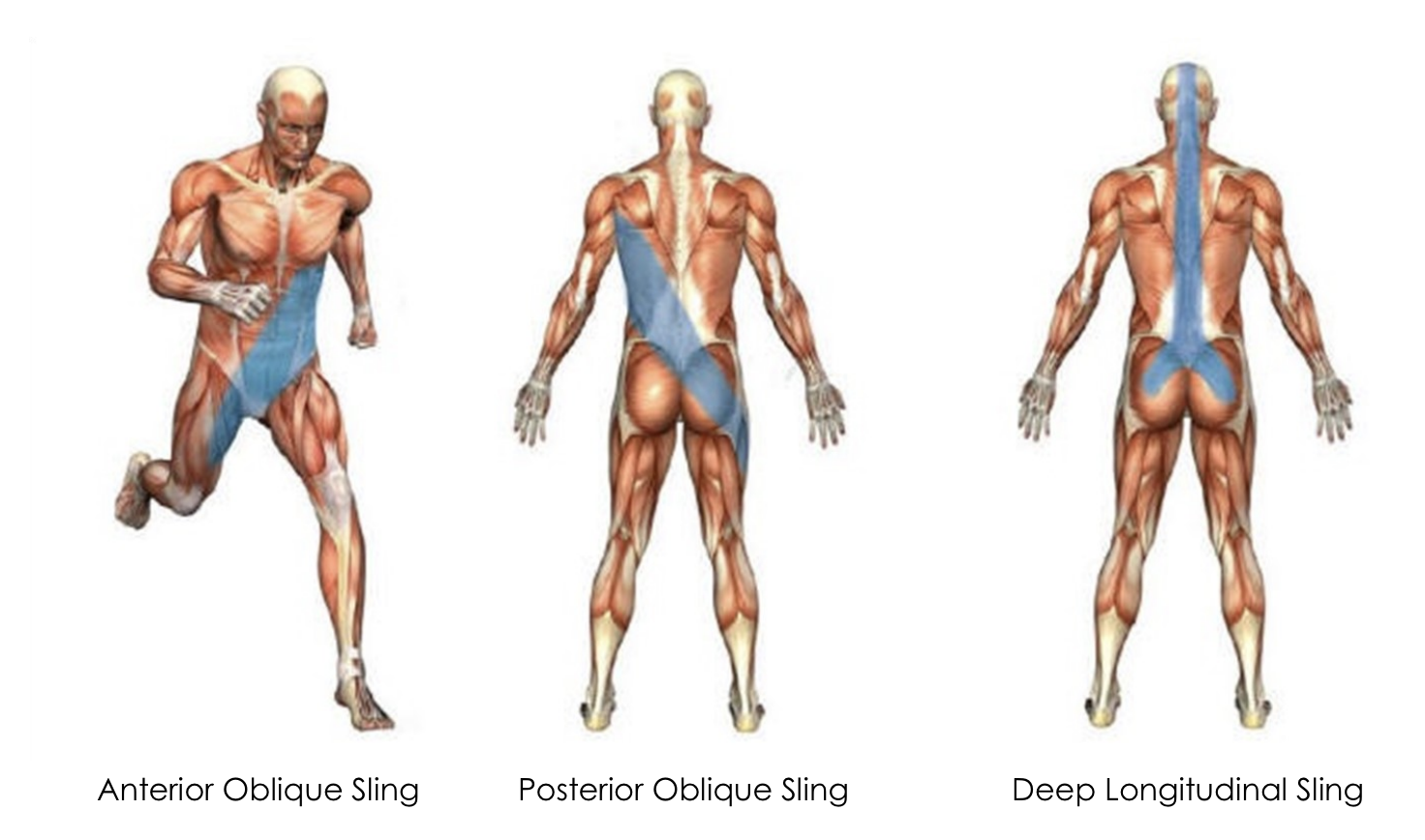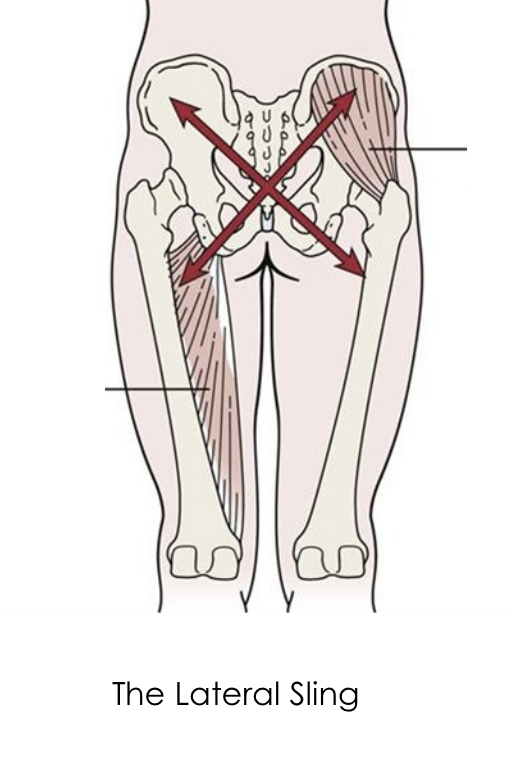The wonder of myofascial slings
Have you ever wondered why the body works so seamlessly in diagonals? Opposite arm coordinating with the opposite leg; think running, golf or tennis. This ability to transmit force diagonally across the trunk to allow functional and dynamic movement is one of the many functions made possible by the presence of myofascial slings.
Myofascial slings are complex connections of muscle, fascia, and ligament, which help support the inner, stabilising muscles (deep supportive core) of the trunk and significantly contribute to movement and stability of the lumbar spine and pelvis.
The human body contains four sling systems that each play a unique role in providing this stable base for function. The harmonious relationship between the slings enables optimal dynamic movement and maximises power, strength and speed. Deficiencies within a particular sling due to injury or repeated postures can result in suboptimal movement patterns. Pilates is a fantastic tool to identify sling weaknesses and to tap into a specific sling. Careful exercise selection can enhance or energise that sling to assist in regaining its' optimal function, thereby improving overall movement.

The Anterior Oblique Sling (AOB) consists of the external oblique coupled with the opposite adductors. It crosses the pubic symphysis and provides pelvic stability as forces are transmitted from the trunk to the legs, e.g. walking, running etc. Pilates exercises for this sling include oblique/Abdo prep, hundreds and leg pull in prone prep; however, if a Pilates ball is gently squeezed between the knees during any suitable exercise, the AOB is enhanced.
The Posterior Oblique Sling (POS) couples the glute max with the opposite lat dorsi. Through the thoracolumbar fascia, this sling stabilises the sacroiliac joint (SIJ) and creates stability at the back of the pelvis, especially during single-leg propulsion. The POS is in action during such Pilates exercises as swimming, leg pull in prone, and targeted during squats, lunges, etc.
The Deep Longitudinal Sling (DLS) is often referred to as the 'great communicator' as it assists the lower body to know where the upper body is in space. It creates stability around the pelvis during forwards and backwards movements. It is the only sling that does not cross on a diagonal and consists of the erector spinae through to the bicep femoris on the same side of the body. The complex coupling of the multifidus in the lumbar spine with the sacrotuberous ligament within the pelvis create stability during any standing activity. The DLS is particularly invigorated during a single leg bridge and the roll down exercises.
The Lateral Sling (LS) consists of the glute medius with the opposite adductors. It is an essential contributor to the pelvis's rotary control, particularly in a single leg stance position. Energising the lateral sling can be achieved in any bipedal exercise by pressing the knees out into a Pilates ring/band. Side-lying glute exercises such as sidekick, leg lifts and side planks energise this sling.

Utilising the myofascial slings to achieve optimal function will take your Pilates practice to a whole new level. Precise exercise prescription will achieve better results, even out imbalances and assist injury recovery.
Author: Jennifer Reincastle
Physiotherapist
Unite Health/ APPI Pilates Certified Pilates instructor and Educator